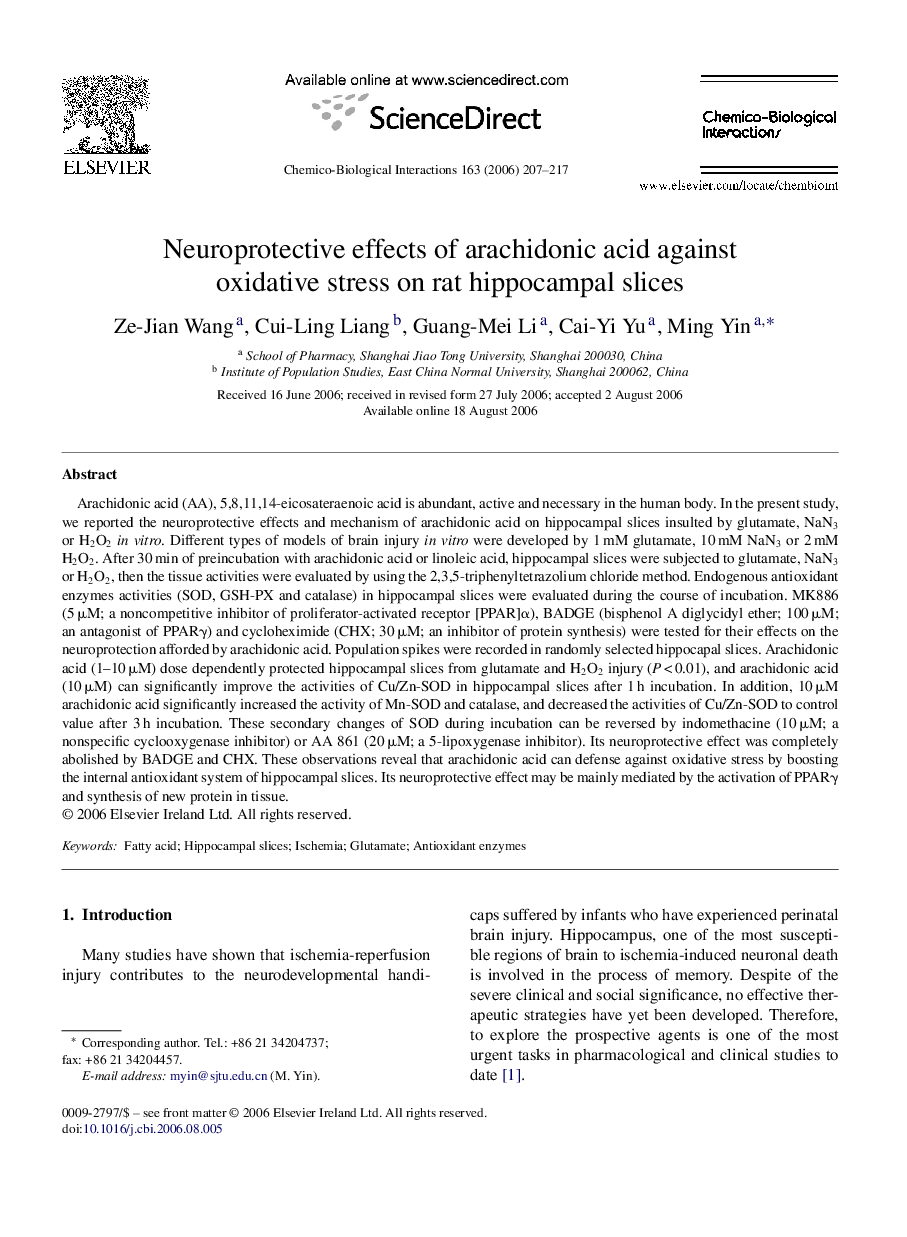| کد مقاله | کد نشریه | سال انتشار | مقاله انگلیسی | نسخه تمام متن |
|---|---|---|---|---|
| 2582652 | 1130269 | 2006 | 11 صفحه PDF | دانلود رایگان |

Arachidonic acid (AA), 5,8,11,14-eicosateraenoic acid is abundant, active and necessary in the human body. In the present study, we reported the neuroprotective effects and mechanism of arachidonic acid on hippocampal slices insulted by glutamate, NaN3 or H2O2in vitro. Different types of models of brain injury in vitro were developed by 1 mM glutamate, 10 mM NaN3 or 2 mM H2O2. After 30 min of preincubation with arachidonic acid or linoleic acid, hippocampal slices were subjected to glutamate, NaN3 or H2O2, then the tissue activities were evaluated by using the 2,3,5-triphenyltetrazolium chloride method. Endogenous antioxidant enzymes activities (SOD, GSH-PX and catalase) in hippocampal slices were evaluated during the course of incubation. MK886 (5 μM; a noncompetitive inhibitor of proliferator-activated receptor [PPAR]α), BADGE (bisphenol A diglycidyl ether; 100 μM; an antagonist of PPARγ) and cycloheximide (CHX; 30 μM; an inhibitor of protein synthesis) were tested for their effects on the neuroprotection afforded by arachidonic acid. Population spikes were recorded in randomly selected hippocapal slices. Arachidonic acid (1–10 μM) dose dependently protected hippocampal slices from glutamate and H2O2 injury (P < 0.01), and arachidonic acid (10 μM) can significantly improve the activities of Cu/Zn-SOD in hippocampal slices after 1 h incubation. In addition, 10 μM arachidonic acid significantly increased the activity of Mn-SOD and catalase, and decreased the activities of Cu/Zn-SOD to control value after 3 h incubation. These secondary changes of SOD during incubation can be reversed by indomethacine (10 μM; a nonspecific cyclooxygenase inhibitor) or AA 861 (20 μM; a 5-lipoxygenase inhibitor). Its neuroprotective effect was completely abolished by BADGE and CHX. These observations reveal that arachidonic acid can defense against oxidative stress by boosting the internal antioxidant system of hippocampal slices. Its neuroprotective effect may be mainly mediated by the activation of PPARγ and synthesis of new protein in tissue.
Journal: Chemico-Biological Interactions - Volume 163, Issue 3, 7 November 2006, Pages 207–217